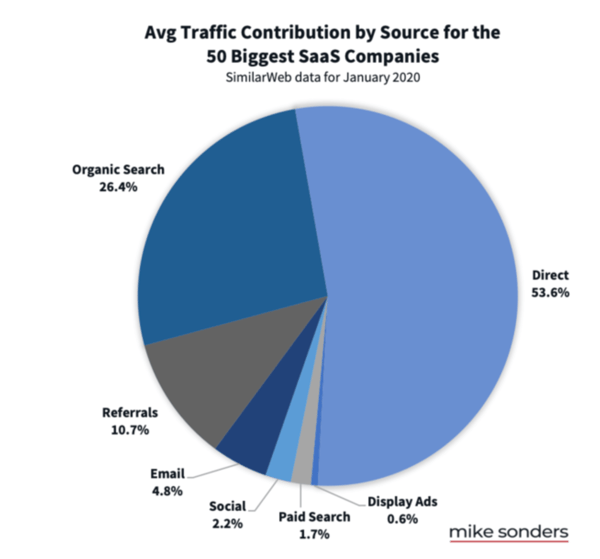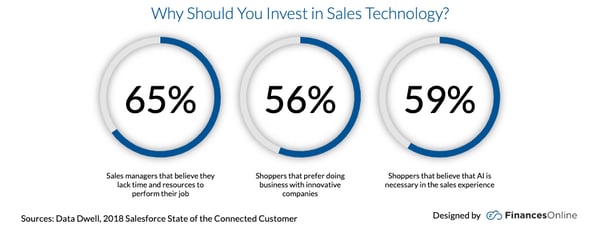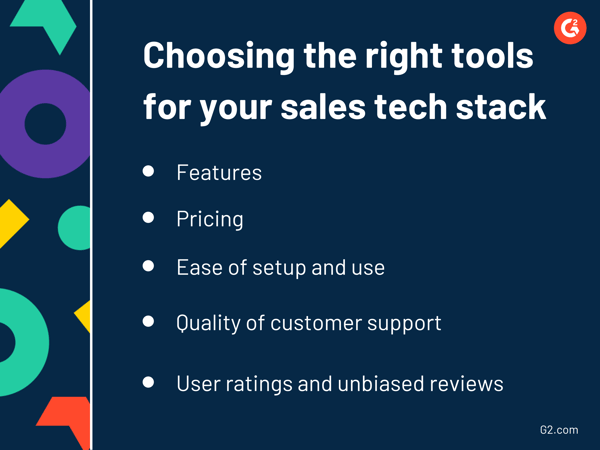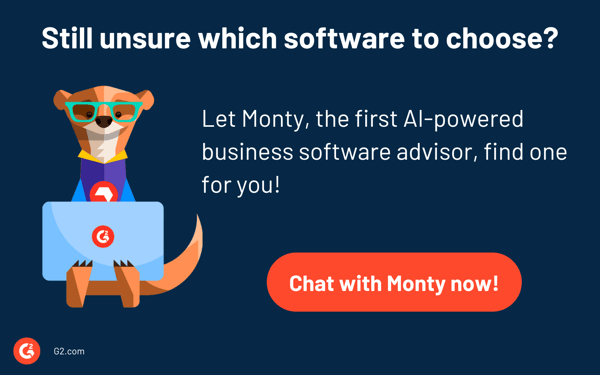What would you choose: working on a $1M deal for a year or having a million small or mid-size business (SMB) deals?
If your product caters to multiple startups and enterprises, casting a wide sales net might be hazardous. Building numerous sales pipelines for multiple accounts is a recipe for chaos. A spray-and-pray sales cycle results in bloated intent, lead leakage, and competitor poaching.
Building your SaaS brand, one SMB sale at a time can land you in the B2B software market.
Analyzing the nature of SMB sales is crucial to landing a new sales client. Building effective engagement, sales outreach activities, and marketing content with sales enablement software highlights the core competencies of your SaaS products and helps glide into future collaborations.
What is an SMB sale?
An SMB sale is a targeted sales approach where SaaS providers narrow down their deal scope to only small and mid-size businesses. In this strategy, the main top line and bottom line of a B2B software vendor are dedicated to SMB sales and that becomes their main source of revenue.
Creating a rapport with software vendors can look gullible, but it is so not. These vendors in the SMB segment often undergo rigorous team transitions, venture capitalist (VC) funding issues, fewer conversions, and so on. Understanding these challenges and building a premise before delving into a push sales pitch is important to build long-term relationships and partnerships.
How does SMB sales work in the realm of SaaS?
Building an SMB network is quite a challenge; there are dozens of pitfalls and risks you need to navigate every day just to stay afloat, let alone grow or become profitable.
That is why selling to SMBs is no easy task. After all, small businesses typically have scarce resources. So if you’re not offering enough value in return for what they’re asking for, you won’t get past the initial contact with the prospect.
As a result, SMB sales have a lot to do with psychology. And while using certain brain tricks can help you sell more, there’s more to a successful SMB strategy than that. Namely, three things can help you sell to small and medium-sized businesses: orderly sales processes, an effective sales strategy, and the proper toolset to augment your efforts.
In this guide, we will talk about the listed aspects of the mid-market sales process and how they can contribute to your bottom line.
How to set up an effective SMB sales process
An effective, well-structured sales process is one of the aspects that separate high-performing sales organizations from average and underperforming ones. To make this an absolute dealbreaker, you need a proper structure and scheduler to shortlist and categorize your SMB accounts the way you want them to be.

But what makes it so important? We’ll get to that later. First, let’s define a sales process itself and see how selling to small and medium-sized businesses differs from enterprise sales.
The SMB sales process explained
Simply put, the sales process is a set of activities that help you convert leads into customers. Although specific activities and their number might differ depending on your business type and the strategies you use, a typical sales process includes the following steps:
Prospecting
While you scout the right buyers after studying your clickstream marketing data, you set the stage for accurate sales prospecting for your business. Analyze and crunch your big data numbers with big data software to check the source, demographics, industry, employee size, designation, target market, and other parameters of the customers. Customers could be B2B or B2C. Don’t just look on one end of the horizon. Small B2C brands could also be struggling with server-based issues or optimization issues and looking to replace their agent legacy systems with a SaaS service. Skewed customer data might lengthen your sales cycles. Check, vet, analyze, and repeat the process until you get a finalized dataset of possible marketing-qualified leads or MQLs.
While you are at it, evaluating G2’s Buyer Intent can also help in receiving intent signals from your prospects and getting real-time intel into market behavior for potential sales targeting. The better you understand your market, the more cleanly you can position your brand.
Connecting and qualifying
Connecting isn’t a unidimensional affair but something that you build up to. In fact, According to research by Statista, 8 out of 10 US SMBs have agreed that digital advertising and outreach are crucial for their business. Additionally, 70% of SMBs plan to increase their usage of online advertisements within the next two years.
During the qualification stage, aligning the customer’s goals with your own is imperative. The above-mentioned key performance indicators for your customers should be your core value proposition while reaching out to them. Analyzing their core business objectives and pitching your service would enable customers to look at the positives of the deal and invest their revenue intelligently.
Demonstrating value
Most SMBs switch to onboarding multiple agency partners to implement digital marketing initiatives to get their customer’s attention. But, remember that this can even collude your user experience and lead to inefficient demand generation. Creating an organic presence to extract your true value as a solutions provider is crucial.
For that, you will need a dedicated solution consultant team. Contextualizing customer concerns is the first step in building any kind of go-to-market strategy for your brand. Further, revenue doesn’t have to be the only far-fledged goal here. Sticking to smaller and achievable goals would be the biggest lynchpin for growth. Basically, providing a seamless web journey and creating personalized connections with a community creation is equally as important as GTM. Integrating G2 with your go-to-market strategy can generate credible marketing touchpoints based on buyers’ behavior on your website.
Handling objections
Most SMBs would be aiming for operational efficiencies rather than investing in more integrations and services. Handling sales objections can be exhausting as sales queries might vary in terms of subscription plans, licenses, contract policies, implementation process, demo and trial services, and so on. Having a dedicated sales and marketing team along with the right sales enablement material can make them consider this investment and put you on their “top vendor” radar, This might directly accelerate into conversion if the sales teams exhibit confidence and trust with the client.
Closing & Nurturing
At this stage, the client has turned into a high-intent sales-qualified lead and is ready to pay. But, even things can go south here. Respect the owners’ limited time, be open to their suggestions regarding meetings, and collaborate on building a network of like-minded SaaS leaders to land a memorandum of understanding (MoU) with ease. While marketing and communication are good for brand positioning, the real dollar value lies in your SaaS product. Building a deal for them that brings maximum SaaS optimization and efficiency to their company and helps them grow in revenue and close more funding rounds is the final cherry on the deal.
As mentioned above, these steps are pretty universal; they can also be used with larger companies, not just small and medium-sized businesses. However, when discussing enterprise sales versus SMB sales, there are distinct differences. For example, the latter usually has a much shorter cycle, is not as structured, and there are fewer stakeholders involved.
Still, it doesn’t mean that you don’t need to bother with any formal process when selling to small and medium-sized businesses – quite the opposite.
Why do SMBs need a solid sales process?
According to YouGov and Pipedrive research, an average UK SMB is losing up to £15,000 every month due to disorganized or inaccurate sales activities. In this regard, the most common hurdles SMB sales teams face are poor sales performance, inefficient sales operations, and a lack of sales tools management practices.
This is why formalizing and communicating your process to the team can make a difference for your business, helping you improve your sales team’s productivity and build rapport within it.
What makes a winning SMB sales process?
Having your sales cycle stages sorted out is half the battle. Other aspects define the success of your sales process, for example:
- Clearly defined ideal customer profile and buyer persona
- Mapped out customer journey
- Productive team with allocated roles and responsibilities
- Suitable sales strategy
- Solid toolset to support your sales efforts
While identifying your ideal customer and keeping your team productive is important, the strategy and toolset you choose have a much bigger impact on your sales success, especially for SMB sales. That is why those two aspects merit special mention in this guide.
Lead generation for SMB sales
Reaching out to a high-potential lead that raised a genuine inquiry is the starting point of your SMB sales cycle. Further, attributing the right lead source with the right customer nurturing program and cross-checking lead intent empowers your teams to accelerate sales conversion strategies.
The strategy you choose to generate and convert SMB inquiries also banks on how you approach your sales journeys in general. Not all strategies or pitches work equally for different prospects, and sales objections are always dreaded during sales conversations. Taking into account the specifics of the lead profile and the source they approached from is a norm for a business.
All lead generation methods are typically classified into inbound and outbound ones.
1. Inbound lead generation
According to DemandWave, most B2B leads come from inbound sources, namely inbound calling, email marketing, organic search, and social media. And that is very much true when selling to small and medium-sized businesses.
These leads are serious about the inquiry and make an effort to understand and research the services of sales vendors before making an investment. These buyers are out and about in the market, vetting and analyzing competitors and seeking ways to grow their brand.

Source: mike sonders
To get the most out of this approach, you can also use some proven inbound tactics, e.g. targeting and segmentation, timing, re-nurturing, and so on.
2. Outbound lead generation
Outbound strategies, e.g. outbound sales, are often referred to as traditional sales tactics (and even deemed obsolete by some). The fact is, however, they still work pretty well and can even get you a steady flow of leads if you choose the right tactic.
For example, to make cold outreach effective for SMB sales, you should finetune the strategy for targeted, personalized engagement across several channels, instead of aiming for as many dials per day as possible.
3 tips for building a successful SMB sales strategy
Regardless of the approach you choose, some things can help you optimize it for SMB sales and boost their effectiveness:
- Qualify and prioritize your leads. The ability to tell the leads who are most likely to convert from the ones who will only waste your time is especially important for high-volume SMB sales funnels. After all, if you try to chase all the rabbits you might end up catching none of them.
- Focus on building relationships. Don’t think of your prospects as the numbers in your CRM. A successful SMB strategy is all about people. So, instead of pitching your product to the prospect right away, aim at establishing a connection first of all.
- Deploy omnichannel sales tactics. There’s no need to choose between the inbound and outbound techniques. For better results, use a combination of both methods and offer a multichannel, end-to-end customer journey. On top of that, using certain software can help you increase the effectiveness of your SMB sales efforts.
Build your ultimate SMB sales toolset
There’s a good reason why >50% of customers express their desire to realize ROI within the first 6 months. Out of them artificial intelligence (AI) categories have seen a 44% YoY growth as per the G2’s state of software report for May 2024. Customers need technology to close more deals. A solid adherence to this persona shift can make your SMB sales process a lot more efficient and contribute to its overall success.
Namely, there are three main reasons to invest in sales technology: to use your time and resources more efficiently; to gain a competitive edge as an innovative company; and to offer a better sales experience.

Now, let’s see which tools you need to get those benefits.
Must have SMB software in your toolset
A typical stack of a sales development representative consists on average of 6 tools, including CRM, data services, social prospecting, and sales cadence automation, i.e. email and phone engagement software. However, when it comes to the number of sales tools in your stack, more doesn’t always mean better.
To start with, consider including these three types of sales software in your stack: CRM software, sales acceleration tools, and sales intelligence software.
- CRM software: CRM software is the backbone of any sales process. It has a major impact on your bottom line, helping you close 29% more deals, improve productivity by 34%, and get 42% more accurate forecasts.
- Sales acceleration tools: Sales acceleration tools, including process automation, sales enablement, and engagement software, represent another vital aspect of any SMB sales toolset. Adding such software to your toolset can lead to a 30% increase in deal closures while helping you reduce your sales cycle by 18%, and sales administration time by 14%.
- Sales intelligence software: Sales intelligence software, from lead generation tools to conversational intelligence and analytics platforms helps you sell smarter, drawing on data from the rest of your sales stack. No surprise that 98% of top-performing sales teams believe that it’s one of the most important means for closing deals.
Employing at least one tool, from each category in your SMB sales process should be enough to keep track of your leads, engage with them across multiple channels, and source actionable insights from the data to fine-tune the process along the way.
How to pick the right tools for your sales stack?
With the vast variety of sales tools on the market, making the right choice has never been so hard. One of the obvious ways to pick the best tools is by following someone’s recommendations. However, simply copying someone else’s toolset is too risky: what works for one business might not necessarily work for you.
To make an informed decision regarding your sales tool set you need to look through a broader lens. Namely, here are some of the key factors you need to take into account at the evaluation stage:

This is where unbiased user review platforms like G2 come in handy. You can easily assess the available options and make a side-by-side comparison, based on the listed criteria.
From SMB accounting to hiring a bookkeeper to social media content, the best way to see if the software meets your needs is to see it in action. When shopping around for sales tools, prioritize the ones that offer a free trial and take a couple of shortlisted options for a test drive before making the final decision.
Reach low-hanging wins!
Tailoring your sales efforts towards ideal SMB customers does not only mean that you want an extensive client roaster. It aims at greater collaborations, learnings, and partnerships to navigate the tough terrain of the B2B landscape. These lifelong relationships would shape your business into an inclusive and smart-growing brand that will set an example for other competitors. We hope this guide was of any help to you!
Starting out as a sales professional? Check out these 20+ sales skills to master any sales conversation and close more deals than everyone else.
This article was originally published in 2020 and has been updated with new information.






